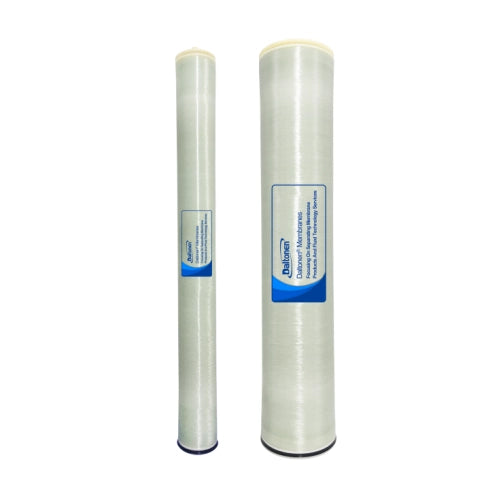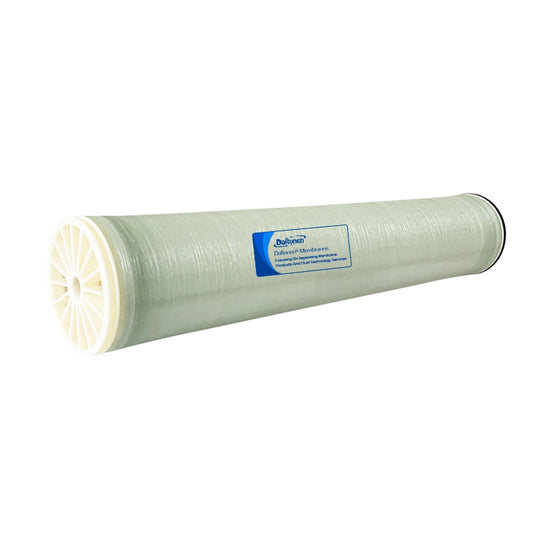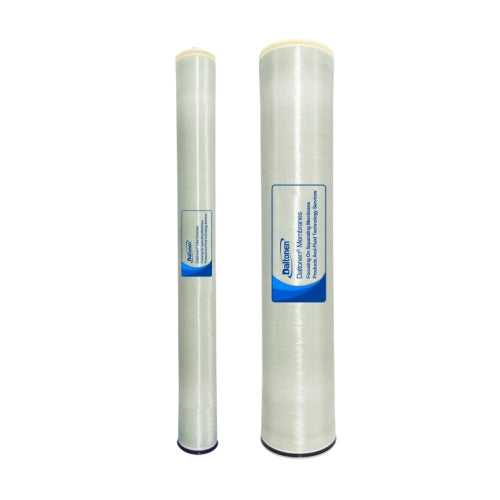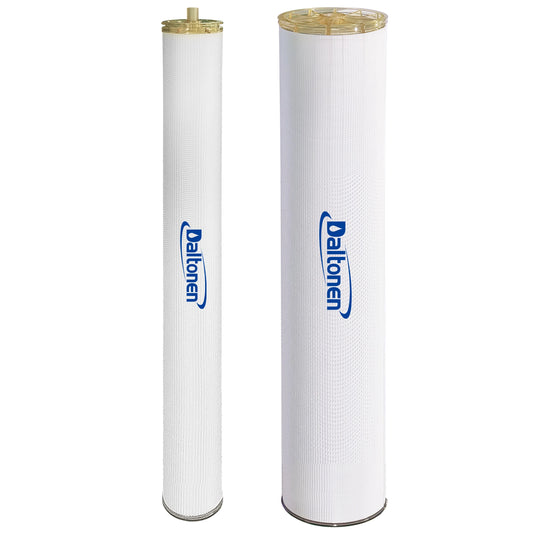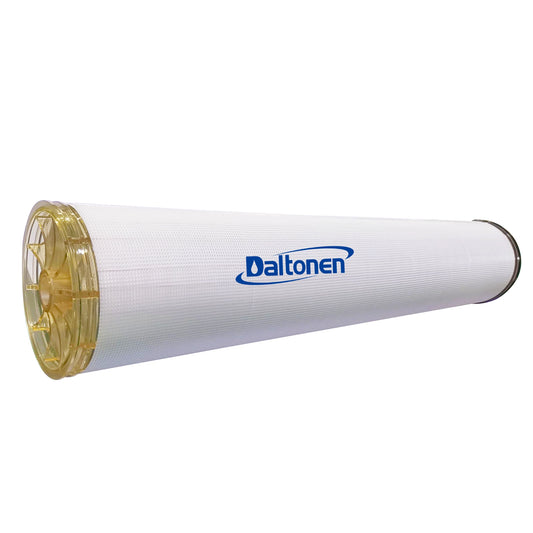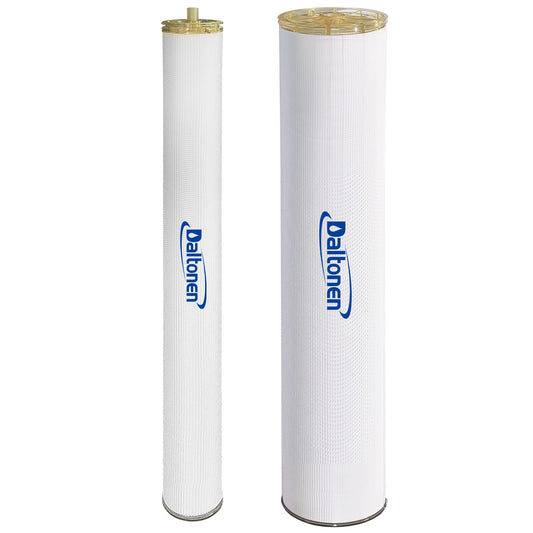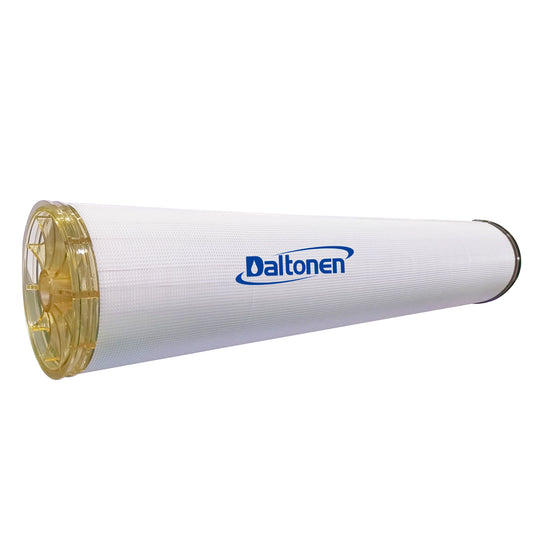How to Deal with Fouling of RO Membranes in Aquaculture Wastewater
06 Jul 2025
1. Analysis of Fouling Causes of RO Membranes
1.1 Main Fouling Constituents in Aquaculture Wastewater
Aquaculture wastewater contains a variety of constituents, which are the main factors leading to RO membrane fouling.
-
Inorganic Salts: Aquaculture wastewater contains a large amount of inorganic salts such as calcium, magnesium, and silicon. Among them, calcium and magnesium have relatively high concentrations. These ions exist in water in ionic form. When water passes through the RO membrane, these ions will precipitate and deposit on the membrane surface, forming scale. For example, in the wastewater of a certain aquaculture farm, the concentration of calcium ions can reach 200 mg/L, and the concentration of magnesium ions can reach 100 mg/L. These high-concentration ions are important factors leading to fouling.
-
Organic Matter: Aquaculture wastewater contains a large amount of organic matter, such as proteins, fats, and carbohydrates. These organic substances adsorb and deposit on the RO membrane surface, forming a biofilm. The biofilm not only blocks the membrane pores but also provides nutrients for microbial growth, further exacerbating fouling. Studies have shown that the concentration of organic matter in aquaculture wastewater (measured as COD) is usually between 500 and 1000 mg/L.
-
Microorganisms: Aquaculture wastewater contains a large number of microorganisms, such as bacteria and algae. These microorganisms proliferate on the RO membrane surface and form biofilms. Biofilms not only block the membrane pores but also interact with inorganic salts to form complex fouling layers. For example, in the wastewater of a certain aquaculture farm, the total number of bacteria can reach 10^6^ CFU/mL.
1.2 Fouling Formation Mechanism
The formation of RO membrane fouling is a complex physicochemical process, which mainly includes the following stages:
-
Adsorption Stage: When aquaculture wastewater passes through the RO membrane, the inorganic salt ions, organic matter, and microorganisms in the water will first adsorb on the membrane surface. This adsorption is mainly caused by factors such as the membrane surface charge, hydrophobicity, and surface energy.
-
Deposition Stage: With the progress of adsorption, the inorganic salt ions in the water will precipitate and deposit on the membrane surface, forming inorganic scale. At the same time, organic matter and microorganisms will also deposit on the membrane surface, forming a biofilm. The biofilm will further adsorb inorganic salt ions from the water, accelerating the formation of fouling.
-
Growth Stage: The microorganisms in the biofilm will continue to multiply, and the thickness of the biofilm will increase continuously. At the same time, inorganic scale will also continue to grow, forming a complex fouling layer. This fouling layer will block the membrane pores, increase the membrane resistance, and reduce the membrane flux.
-
Stabilization Stage: After a period of time, the fouling layer will gradually stabilize and form a hard scale layer. This scale layer will seriously affect the performance of the RO membrane, causing a significant decrease in membrane flux and an increase in operating costs.

2. Physical Cleaning Methods
2.1 Backwashing Operation Procedure
Backwashing is one of the commonly used physical methods for dealing with RO membrane fouling in aquaculture wastewater, and its operation procedure is as follows:
-
Preparation Stage: Close the feedwater valve of the RO membrane system to ensure that no water flows through the system. At the same time, prepare the backwashing equipment, including backwashing pumps, backwashing water tanks, etc.
-
Backwashing Stage: Start the backwashing pump and inject the backwashing water from the permeate side of the RO membrane to flush the membrane surface in the reverse direction at a certain flow rate. The flow rate of the backwashing water is generally controlled at 3-5 m/s, and the backwashing time is 10-15 minutes. During the backwashing process, the water flow will flush off the fouling substances on the membrane surface and discharge them through the drain pipe.
-
Restoration Stage: After the backwashing is completed, close the backwashing pump, open the feedwater valve of the RO membrane system, and resume normal operation. Backwashing is simple and low-cost, but it has limited effect on membranes with severe fouling.
2.2 Gas-Liquid Mixed Cleaning Technology
Gas-liquid mixed cleaning technology is an efficient physical cleaning method, and its specific operation is as follows:
-
Equipment Preparation: It is necessary to prepare a gas-liquid mixed pump, compressed air source, cleaning liquid, and other equipment and materials. The cleaning liquid generally uses water or a solution containing a small amount of surfactant.
-
Mixing Stage: Mix the compressed air and cleaning liquid through the gas-liquid mixed pump to form a gas-liquid mixed flow. The gas-liquid ratio of the mixed flow is generally controlled at 1:5-1:10. This mixed flow has strong impact and shear forces.
-
Cleaning Stage: Inject the gas-liquid mixed flow from the feedwater side of the RO membrane to flush the membrane surface at a certain flow rate. The flow rate of the gas-liquid mixed flow is generally controlled at 2-3 m/s, and the cleaning time is 20-30 minutes. During the cleaning process, the gas-liquid mixed flow will impact the fouling layer on the membrane surface, causing it to loosen and fall off.
-
Discharge Stage: After the cleaning is completed, discharge the cleaning liquid and the detached fouling substances through the drain pipe. Gas-liquid mixed cleaning technology has a good effect on removing fouling layers, especially suitable for removing biofilms and organic fouling.
3. Chemical Cleaning Strategies
3.1 Selection and Use of Acidic Cleaning Agents
Acidic cleaning agents are one of the important means for dealing with RO membrane fouling in aquaculture wastewater, especially for removing inorganic scale.
-
Cleaning Agent Selection: Commonly used acidic cleaning agents include hydrochloric acid, citric acid, oxalic acid, etc. Among them, hydrochloric acid has a good cleaning effect, but it is highly corrosive to membrane materials; citric acid and oxalic acid are relatively mild, with less corrosiveness to membrane materials and certain biodegradability. Studies have shown that citric acid has the best effect on removing inorganic scale such as calcium and magnesium when the pH value is 2-3.
-
Cleaning Procedure: First, close the feedwater valve of the RO membrane system and prepare an acidic cleaning agent solution with a certain concentration, generally 0.1%-0.5%. Then, inject the cleaning liquid from the feedwater side of the RO membrane and soak the membrane surface for 1-2 hours. During the soaking process, the acidic cleaning agent will chemically react with the inorganic scale to form soluble salts, thereby removing the fouling. Finally, discharge the cleaning liquid from the system and rinse the membrane surface with water to ensure that the cleaning liquid is completely removed.
-
Cleaning Effect: Experiments have shown that after cleaning the severely fouled RO membrane with citric acid cleaning agent, the membrane flux can be restored to 80%-90% of the initial flux. Acidic cleaning agents have a significant effect on removing inorganic scale, but their effect on organic matter and biofilm is limited.
-
Precautions: When using acidic cleaning agents, it is necessary to strictly control the concentration and temperature of the cleaning solution to avoid damaging the membrane material. At the same time, the pH value of the cleaning solution should be regularly monitored during the cleaning process to ensure that it is within the appropriate range.
3.2 Application of Alkaline Cleaning Agents
Alkaline cleaning agents are mainly used to remove organic matter and biofilm from the surface of RO membranes.
-
Cleaning Agent Selection: Commonly used alkaline cleaning agents include sodium hydroxide, sodium carbonate, and sodium tripolyphosphate. Among them, sodium hydroxide has a good cleaning effect, but it is highly corrosive to membrane materials; sodium carbonate and sodium tripolyphosphate are relatively mild, with less corrosiveness. Studies have shown that sodium carbonate has the best effect on removing organic matter and biofilm when the pH value is 10-11.
-
Cleaning Procedure: First, close the feedwater valve of the RO membrane system and prepare an alkaline cleaning agent solution with a certain concentration, generally 0.1%-0.3%. Then, inject the cleaning liquid from the feedwater side of the RO membrane and soak the membrane surface for 0.5-1 hour. During the soaking process, the alkaline cleaning agent will chemically react with the organic matter and biofilm, causing them to decompose and fall off the membrane surface. Finally, discharge the cleaning liquid from the system and rinse the membrane surface with water to ensure that the cleaning liquid is completely removed.
-
Cleaning Effect: Experiments have shown that after cleaning the severely fouled RO membrane with sodium carbonate cleaning agent, the membrane flux can be restored to 70%-80% of the initial flux. Alkaline cleaning agents have a significant effect on removing organic matter and biofilm, but their effect on inorganic scale is limited.
-
Precautions: When using alkaline cleaning agents, it is necessary to strictly control the concentration and temperature of the cleaning solution to avoid damaging the membrane material. At the same time, the pH value of the cleaning solution should be regularly monitored during the cleaning process to ensure that it is within the appropriate range. In addition, since alkaline cleaning agents may be harmful to operators, appropriate protective measures should be taken during the operation process.

4. Pre-treatment Measures to Prevent Fouling
4.1 Water Softening Technology
Water softening technology is an important pre-treatment method to prevent RO membrane fouling in aquaculture wastewater. By reducing the concentration of calcium, magnesium, and other hardness ions in the water, the formation of inorganic scale is reduced.
-
Ion Exchange Method: This is one of the most widely used water softening technologies at present. Through the exchange of ion exchange resin with calcium and magnesium ions in water, hardness ions are removed. Studies have shown that the ion exchange method can reduce the hardness of water to below 0.03 mmol/L. For example, in the treatment of wastewater from a certain aquaculture farm, the calcium ion concentration was reduced from 200 mg/L to 10 mg/L, and the magnesium ion concentration was reduced from 100 mg/L to 5 mg/L, effectively reducing the formation of inorganic scale.
-
Nanofiltration Softening Method: Nanofiltration membranes have a high rejection rate for divalent ions and can effectively remove calcium and magnesium ions from water. The treatment cost of nanofiltration softening method is relatively high, but it has strong adaptability to water quality. Experiments have shown that the rejection rate of calcium ions by nanofiltration membranes can reach more than 90%, and the rejection rate of magnesium ions can reach more than 85%. In practical applications, the nanofiltration softening method can reduce the hardness of aquaculture wastewater to below 0.05 mmol/L.
-
Lime Softening Method: By adding lime to the wastewater, calcium and magnesium ions in the water react with lime to form precipitates, thereby reducing the hardness of the water. The lime softening method is low-cost, but the stability of the treated water quality is poor. Studies have shown that the lime softening method can reduce the hardness of water to around 0.1 mmol/L. In the treatment of wastewater from a certain aquaculture farm, the calcium ion concentration was reduced from 200 mg/L to 30 mg/L, and the magnesium ion concentration was reduced from 100 mg/L to 20 mg/L.
-
Comparison of Softening Effects: Ion exchange and nanofiltration softening methods have better softening effects and can reduce the hardness of water to a lower level, but the cost is relatively high; the lime softening method is low-cost, but the softening effect is relatively poor. In practical applications, the appropriate softening technology should be selected according to the water quality of aquaculture wastewater and the treatment requirements.
4.2 Addition of Scale Inhibitors
The addition of scale inhibitors is an effective method to prevent RO membrane fouling. By adding an appropriate amount of scale inhibitor to the wastewater, the precipitation and deposition of fouling substances can be inhibited.
-
Types of Scale Inhibitors: Commonly used scale inhibitors include organic phosphonic acids, polyphosphates, and polycarboxylates. Organic phosphonic acid scale inhibitors have good scale inhibition performance and are effective in inhibiting inorganic scale such as calcium and magnesium; polyphosphate scale inhibitors have better stability under high-temperature conditions; polycarboxylate scale inhibitors are effective in inhibiting organic and biofilm fouling.
-
Mechanism of Action: Scale inhibitors form stable complexes with calcium, magnesium ions, and other fouling substances in water through complexation reactions, preventing the precipitation and deposition of fouling substances on the RO membrane surface. At the same time, scale inhibitors can also change the surface tension of water, reducing the adsorption of fouling substances on the membrane surface.
-
Scale Inhibitor Dosage: The dosage of scale inhibitors needs to be optimized according to the water quality of aquaculture wastewater and the treatment requirements. Generally, the dosage of organic phosphonic acid scale inhibitors is 1-5 mg/L, polyphosphate scale inhibitors is 2-6 mg/L, and polycarboxylate scale inhibitors is 3-8 mg/L. Experiments have shown that when the dosage of organic phosphonic acid scale inhibitors is 3 mg/L, the scale inhibition rate for calcium and magnesium scale reaches over 90%.
-
Scale Inhibition Effect Evaluation: The scale inhibition effect of scale inhibitors can be evaluated by monitoring the changes in RO membrane flux and the thickness of the fouling layer. In practical applications, after the addition of scale inhibitors, the decline rate of RO membrane flux is significantly slowed down, and the thickness of the fouling layer is significantly reduced. For example, in the treatment of wastewater from a certain aquaculture farm, after the addition of scale inhibitors, the RO membrane flux remained above 80% of the initial flux after 30 days of operation.
5. Summary
In the treatment of aquaculture wastewater, RO membrane fouling is a common problem that seriously affects the performance and service life of the membrane. Through the research mentioned above, we can comprehensively summarize this issue from the aspects of fouling causes, physical cleaning methods, chemical cleaning strategies, and pre-treatment measures.
5.1 Causes and Influencing Factors of Fouling
Aquaculture wastewater contains a large amount of inorganic salts, organic matter, and microorganisms, which are the main factors leading to RO membrane fouling. Calcium and magnesium ions in inorganic salts will precipitate and deposit on the membrane surface, forming inorganic scale; organic matter will adsorb and deposit on the membrane surface, forming a biofilm; microbial proliferation will also exacerbate fouling formation. The formation of fouling is a complex physicochemical process, including stages such as adsorption, deposition, growth, and stabilization, ultimately leading to membrane pore blockage, decreased membrane flux, and increased operating costs.
5.2 Physical Cleaning Methods
Physical cleaning methods are one of the commonly used means for dealing with RO membrane fouling, mainly including backwashing and gas-liquid mixed cleaning technology. Backwashing is simple and low-cost, but it has limited effect on membranes with severe fouling. Gas-liquid mixed cleaning technology can effectively remove biofilm and organic fouling through the impact and shear forces of the gas-liquid mixed flow, and has a good effect on removing fouling layers. However, physical cleaning methods usually can only remove part of the fouling, and frequent physical cleaning may cause damage to the membrane material.
5.3 Chemical Cleaning Strategies
Chemical cleaning is an important means for dealing with RO membrane fouling, mainly including the application of acidic and alkaline cleaning agents. Acidic cleaning agents such as citric acid and oxalic acid have a significant effect on removing inorganic scale, but their effect on organic matter and biofilm is limited. Alkaline cleaning agents such as sodium carbonate and sodium tripolyphosphate are effective in removing organic matter and biofilm, but their effect on inorganic scale is limited. Chemical cleaning can effectively restore membrane flux, but it is necessary to strictly control the concentration, temperature, and pH value of the cleaning solution to avoid damaging the membrane material. In addition, the waste liquid generated during the chemical cleaning process needs to be properly treated to prevent secondary pollution.
5.4 Pre-treatment Measures
Pre-treatment measures to prevent fouling are the key to reducing RO membrane fouling. Water softening technologies such as ion exchange, nanofiltration softening, and lime softening can effectively reduce the concentration of calcium, magnesium, and other hardness ions in water, reducing the formation of inorganic scale. The addition of scale inhibitors can inhibit the precipitation and deposition of fouling substances through complexation reactions with them. The dosage of scale inhibitors needs to be optimized according to the water quality and treatment requirements to ensure the best scale inhibition effect. Through pre-treatment measures, the service life of RO membranes can be effectively extended, and operating costs can be reduced.
In summary, the treatment of RO membrane fouling in aquaculture wastewater requires a comprehensive consideration of physical cleaning, chemical cleaning, and pre-treatment methods. In practical applications, appropriate cleaning and pre-treatment methods should be selected according to the water quality characteristics and fouling conditions of the wastewater to ensure the efficient operation and long-term stability of the RO membrane system.
Tags:
